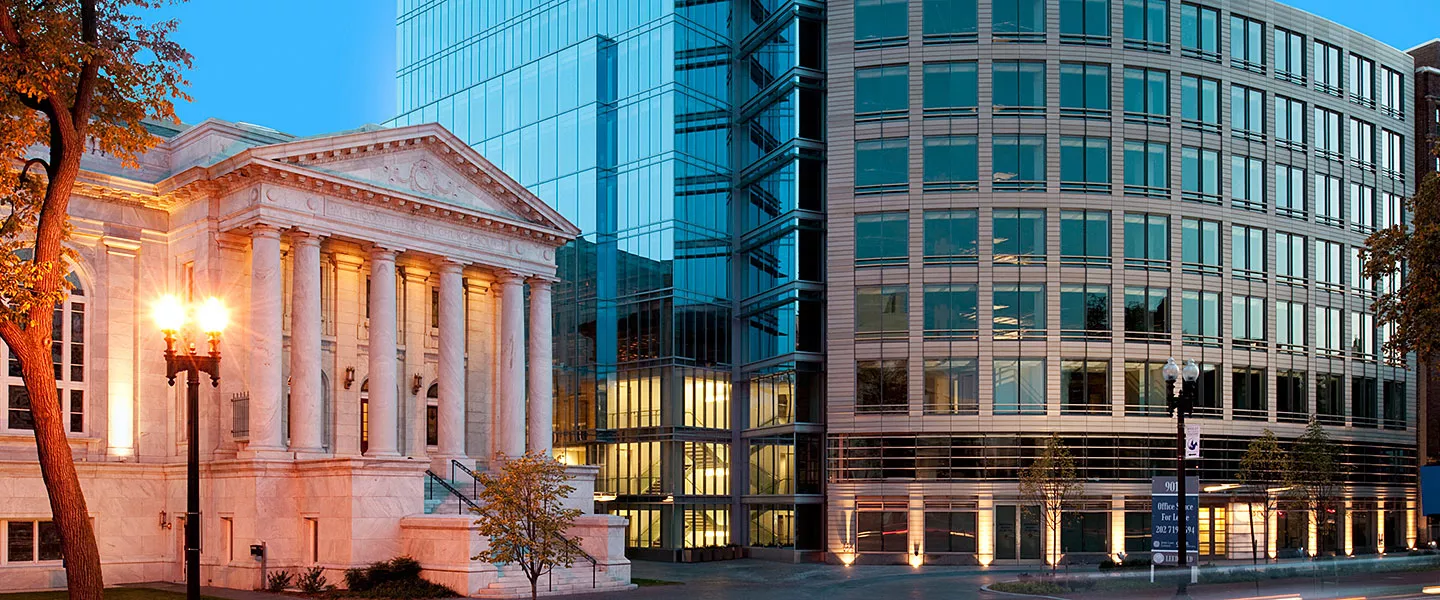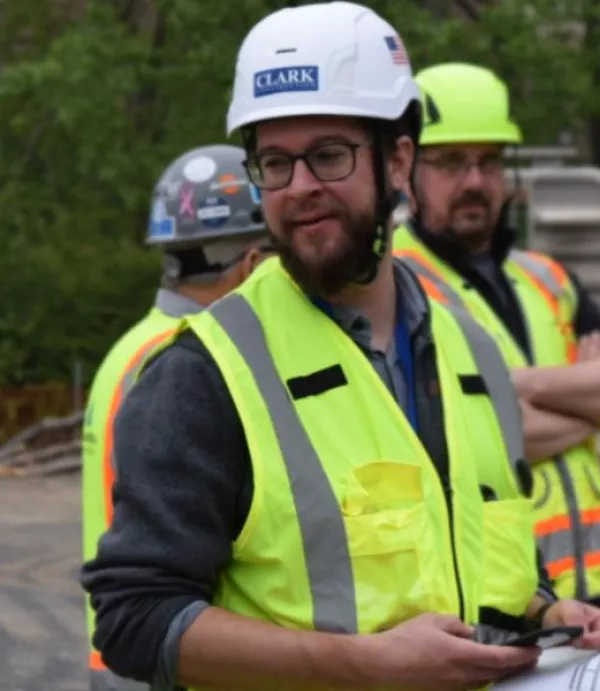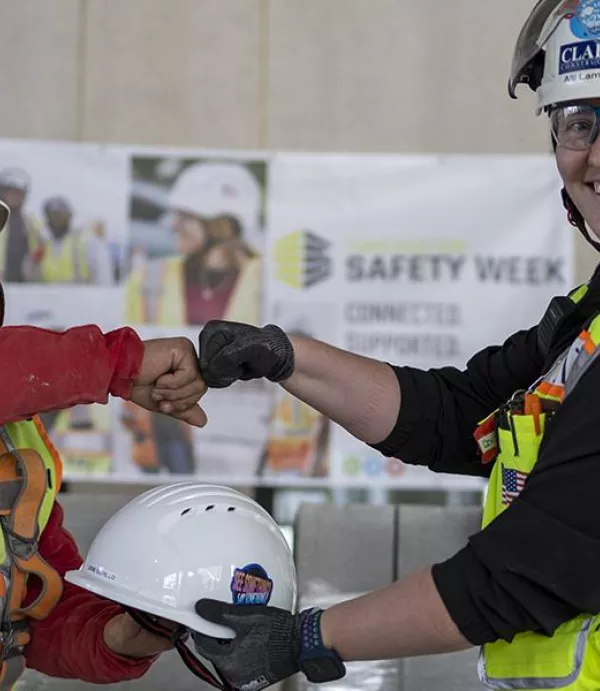Clark Completes Carr Properties' Trophy-Class 901 K Street Office Building
October 23, 2009

WASHINGTON, D.C. – Clark Construction Group, LLC, recently reached substantial completion of Carr Properties' 901 K Street. The trophy-class, 260,000 square-foot building rises 12 stories on a triangular-shaped site between K Street and Massachusetts Avenue in northwest Washington, D.C. A five-story atrium connects 901 K Street with the adjacent Mount Vernon Place United Methodist Church. 901 K Street stands out for its high-quality finishes, unique building materials, and sustainable elements.
Facing K Street, 901 K Street features street-level retail with an all-glass curtain wall system above. Along the building's Massachusetts Avenue façade, which faces the nearby residential community, 901 K Street has warmer terra cotta colors, specifically designed to match the color palette of the surrounding neighborhood. Three glass and stainless steel entrance canopies lead visitors to a lobby adorned with polished Ambarino marble, Peribonka granite, and honey-colored maple wood wall and ceiling panels. The building's unique shape allows tenants to build as many as six corner offices on some levels.
Not only are 901 K Street's finishes luxurious, but some of its building materials are very unique in the Washington, D.C. market. The building has a terra cotta rain screen façade, one of the first major applications of this material in the region. Though Clark had used a small application of terra cotta at its 55 M Street project, the 901 K Street project team had to pioneer new means and methods for working with the material.
901 K Street was designed to achieve LEED® Gold certification from the U.S. Green Building Council. The building's curtain wall system allows natural light to shine into more than 60 percent of the interior spaces, and affords expansive views of downtown Washington, D.C. Additional sustainable elements include green roofs, energy-efficient lighting and mechanical systems, and increased ventilation. During construction the Clark project team recycled more than 75 percent of all construction waste and selected low-emitting and recycled building materials.


